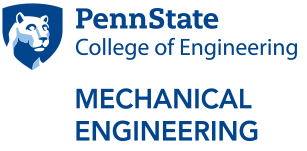Shock-Wave / Boundary-Layer Interactions: Unsteady Physics and Flow Structure Interaction
ME 590 Seminar Speaker Series
Bio:
Dr. Noel Clemens holds the Clare Cockrell Williams Centennial Chair in Engineering in the Department of Aerospace Engineering and Engineering Mechanics at The University of Texas at Austin. He received a B.S. in Mechanical Engineering from the University of Massachusetts/Amherst in 1985, and M.S. and Ph.D. degrees in Mechanical Engineering from Stanford University in 1986 and 1991, respectively. From 1991 to 1993 he was a post-doctoral fellow at the Combustion Research Facility at Sandia National Laboratories in Livermore, CA. Dr. Clemens began as an Assistant Professor at UT in 1993 and was promoted to full professor in 2005. He served as the Aerospace Engineering Department Chair from 2012 to 2019. He received the Presidential Faculty Fellow Award in 1995, the College’s Faculty Excellence Award in 1997, the award for “Outstanding Teaching by an Assistant Professor” in 1998, the ASE/EM Department Teaching Award in 2000, the Lockheed Martin Award for Excellence in Engineering Teaching in 2011, and the AIAA Aerodynamic Measurement Technology Award in 2022. He is a Fellow of both the AIAA and APS, and he served as Editor-in-Chief of Experiments in Fluids from 2009 to 2012.
Additional Information:
Abstract:
Shock wave / boundary layer interactions (SBLIs) are an important phenomenon in high-speed flow that occur in supersonic and hypersonic aircraft inlets, aircraft control surfaces, missile base flows, nozzles, and rotating machinery. These interactions are often associated with severe boundary layer separation, which is highly unsteady, and exhibits high fluctuating pressure and heat loads. The unsteady motions are characterized by a wide range of frequencies, including low-frequency motions that are about two orders of magnitude lower than the integral-scale fluctuations in the upstream boundary layer. The low-frequency motions are particularly problematic for aircraft structures as they can excite high-amplitude vibration of thin panels, which can lead to fatigue and failure. In this seminar, we will discuss some recent experimental research on SBLIs induced by compression ramps where we (i) explore the physics that drive the low-frequency unsteadiness, and (ii) investigate how the low-frequency forcing by an SBLI drives the flow-structure interaction (FSI) of thin panels. The discussion will focus on the physics of SBLI unsteadiness and FSI derived from high-speed pressure-sensitive paint, high-speed particle image velocimetry, and digital image correlation.
Event Contact: Mechanical Engineering


